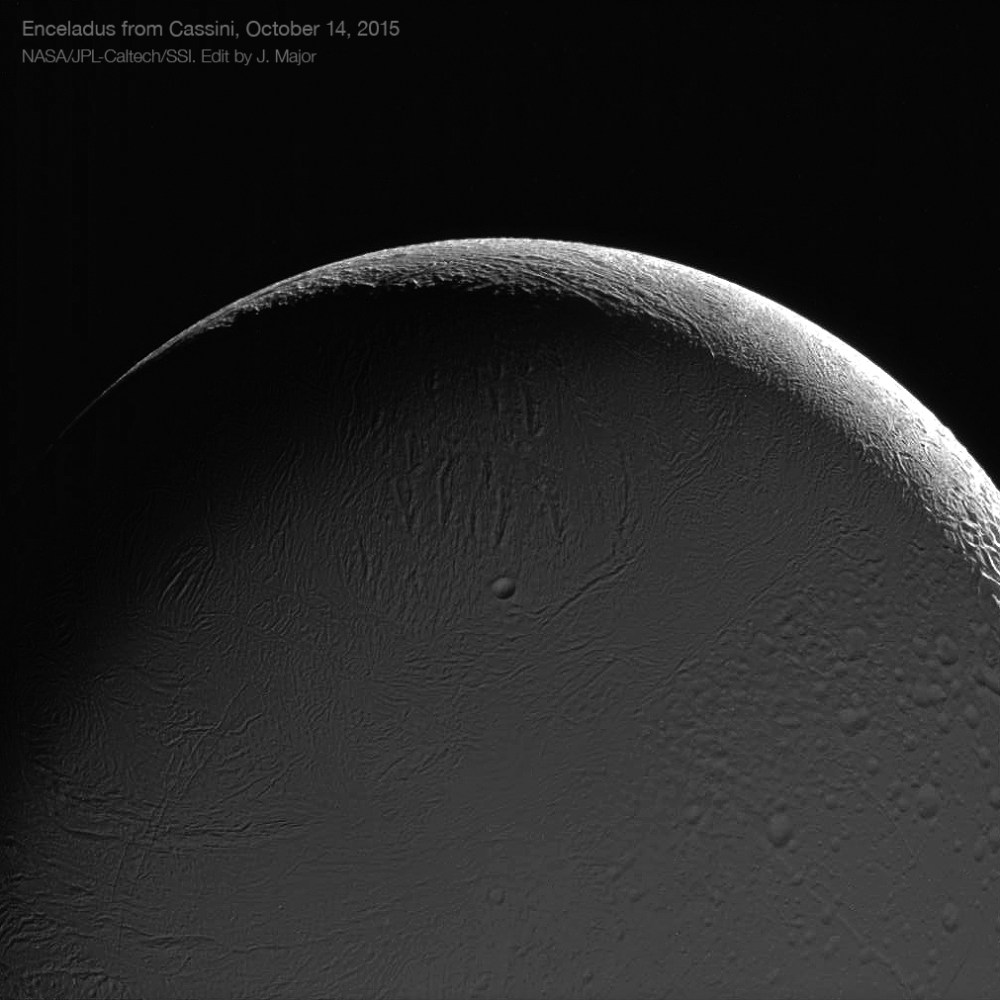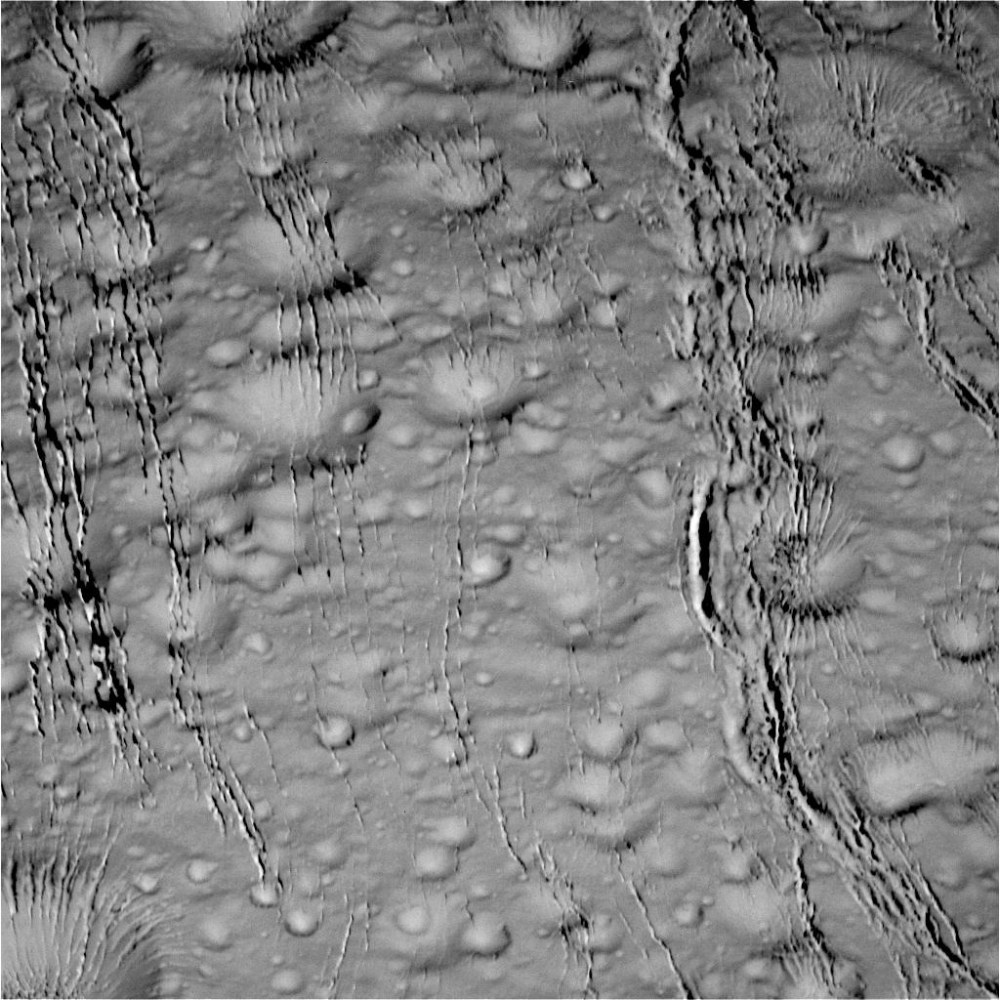
On Wednesday, Oct. 14 2015, Cassini performed its scheduled “E-20” close pass of Enceladus, a 320-mile-wide moon of Saturn that is now famous for the organics-laden ice geysers that fire from cracks in its southern crust. E-20 is the first of a series of three flybys to be performed before the end of 2015, specifically timed to give the spacecraft a good view of Enceladus’ north polar region now that Saturn is moving into its summer season.
The raw image data from E-20 has just arrived on Earth today (which, by the way, is the 18th anniversary of Cassini’s launch!) and I particularly liked the one above. Crescent-lit by the Sun, Enceladus’ night side is seen bathed in the dimmer glow of reflected light off Saturn and its rings. Dead-center is the 6.5-mile-wide crater Bahman, surrounded by a wrinkly field of cracks and troughs in the moon’s highly-reflective icy surface.
Here’s another image from Wednesday’s flyby, showing craters that have been run though by numerous cracks (indicating an active surface!)

Recent findings from the Cassini mission have confirmed the presence of a subsurface ocean sandwiched between its icy crust and rocky core — not pockets of water trapped in ice, not a localized southern reservoir, but a full global ocean similar to Europa’s and Ganymede’s!
Cassini’s next flyby of Enceladus on Oct. 28 will send it directly through the moon’s plumes, where it can closely investigate their composition.
“Enceladus fascinates us because of a sub-surface, global ocean, lying a few tens of miles beneath its surface, that is actively venting into space. And though this magnificent mission, that left Earth 18 years ago today, is not yet over, we are already looking forward to the time, hopefully not too far in the future, when we can travel back to Enceladus with the express purpose of answering the question that burns in all of us: Could there be life under its cracked and cratered surface?”
— Carolyn Porco, Cassini imaging team leader
See the original raw image as it was acquired here, and for more intriguing images from the E-20 flyby check out Nancy Atkinson’s article on Universe Today and on the CICLOPS imaging team’s website here.
Image credit: NASA/JPL-Caltech/SSI. Edited by Jason Major.